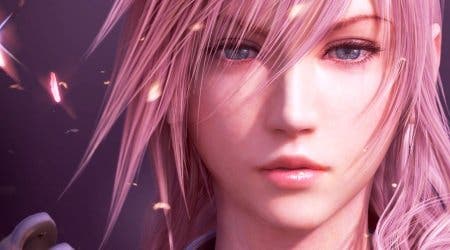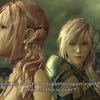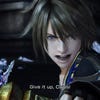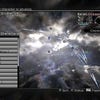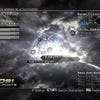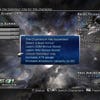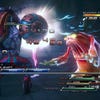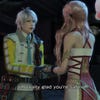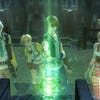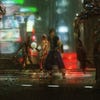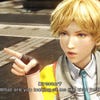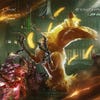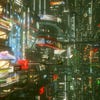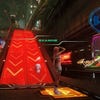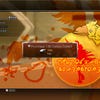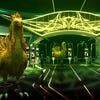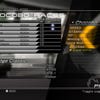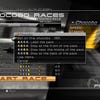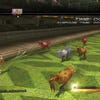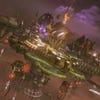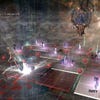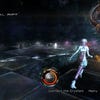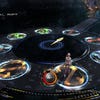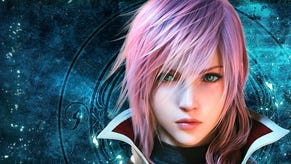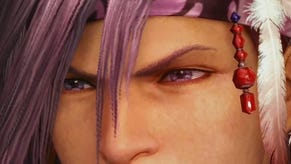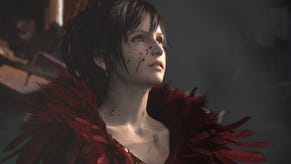Final Fantasy 13-2 Preview
Cie'n it all before?
If you don't like Final Fantasy 13-2, it's your own fault.
For better or worse, the sequel to Square Enix's hard-to-love 2009 effort is a product of democracy. From its opening moments, it's clear that the franchise's core fanbase - or at least its noisier elements - has played a central role in how the game has taken shape.
Did you complain that Final Fantasy 13 was too linear? Square has listened - the corridors have widened out. Thought the first one took an age to get going? Fixed - FF13-2 throws you straight into a wildly OTT boss battle. Were you one of those stamping their feet at the lack of towns to explore and NPCs to chat up? Fear not - 13-2 is busier than Bluewater on Boxing Day. Or perhaps you took to a message board to decry the lack of merchants or Moogles? Rejoice - they're back.
"After we finished making Final Fantasy 13 we had lots of opportunities to listen to our users, as well as the media, and to pick up their feedback," producer Yoshinori Kitase tells Eurogamer in Square's Tokyo HQ.
"We took all of the views - both negative and positive - on board and incorporated those ideas and views into the making of 13-2."
And Square seemingly went much further than just skimming a few message boards. It actually shipped players into the studio for a full debrief on where they felt the game went wrong.
"We didn't just do simple questionnaires, we did more than that. What we did was carry out lots of one-on-one interviews with Final Fantasy gamers to collect their opinions and find out what they're looking for," he explains.
"Basically we wanted to build a very close relationship with gamers and get them involved in the process of making a new Final Fantasy game."
So, does the customer really know best? Well, judged on the game's first five hours or so, the jury is still out.
As already mentioned, in sharp contrast to 13's meandering first third, its sequel bursts out of the gate at a furious clip. The action kicks off in Valhalla, with Lightning facing off against a new foe, and the game's principal antagonist, Caius - a purple-haired dandy seemingly in control of the universe's fractured timeline. Following a dazzling cinematic, we're straight into a boss fight, with Lightning racing along a beach on horseback while fending off Caius' Chaos Bahamut form.
The sequence acts as both a fierce statement of intent and a welcome refresher for the game's breathless Paradigm Shift battle system. As in 13, it's the game's undoubted highlight - dizzyingly fast and complex at first glance, but intuitive and very moreish under closer inspection.
"We took all of the views - both negative and positive - on board."
Yoshinori Kitase, producer, Final Fantasy 13-2
There are a couple of key refinements this time around, the more welcome of which is the new Feral Link feature that lets you recruit conquered monsters as a third member of your team, each with its own QTE-controlled charged special attack. It adds another layer of depth to proceedings, not to mention additional replayability for the collect-'em-all crowd.
On top of that, Square has added 'Cinematic Action' sequences - or, in layman's terms, more QTE. At certain points in key boss battles you can trigger a cutscene where a sequence of button presses and stick waggles result in you inflicting a devastating attack on your foe. Hardly boundary pushing.
With the opening Bahamut boss battle out of the way, the action switches to Gran Pulse, picking up a few years after the conclusion of FF13. We're reunited with Lightning's sister Serah as her adopted hometown of New Bodhum comes under attack from a gang of monsters. Mysterious new character Noel appears out of thin air to save the day, scoop up Serah and embark on a convoluted pan-dimensional quest to reunite her with Lightning and missing fiance Snow.
As promised, the action that follows is more expansive and less linear than in its predecessor. For example, you can wander round New Bodhum at your leisure, chatting to its inhabitants and rifling through their homes. Similarly, you're offered some freedom in your route to the next prescribed story trigger point, with paths branching off in various directions.
It is, in a literal sense, a far cry from the constrained corridors of its predecessor. That said, on the evidence of the game's first few areas, all this new space is largely empty real estate. The NPCs rarely offer more than glib one-liners, their houses are barren and the branching paths all eventually loop round to the same end point. Here's hoping a little more imagination is on display later on in the game.
It's worth noting that the game's new Historia Crux map system, that lets you revisit areas in different time zones, also promises to help make the game feel less linear. However, we can't comment with authority on just how effective it is, as it doesn't really come into play during the game's first few hours.
"I'm utterly convinced it's going to be a success."
Yoshinori Kitase
The game's other big addition is occasional sequences which see Serah transported to something called The Void Beyond and asked to solve a spatial puzzle in order to move the story along. These differ slightly but are basically all variations on navigating your way across grid squares in the correct order. It's an unusual addition and the implementation is rather clumsy, but it does serve to make Final Fantasy 13-2 feel a little more like a game and less like an interactive movie.
All these tweaks, along with the introduction of a Moogle traveling companion for Serah called Mog and a merchant who pops up every now and then to offer various potions and power-ups demonstrate generous respect for the game's fanbase. However, it's also indicative of Square's lack of confidence in Final Fantasy 13's relatively bold template and, like anything designed by committee, at times it all feels like a hasty compromise.
But while the changes might sound relatively drastic, at its core 13-2 plays very much like its predecessor - albeit more streamlined and crowd-pleasing. If you were sucked in by 13's brash spectacle and flashy combat, you'll be more than happy with what Square has to offer here.
However, if you dismissed it as a bloated CGI melodrama that demands little more from the player than an occasional frantic flurry of button presses to move the story along, then its various populist tweaks are unlikely to provide the volte-face you might have been hoping for.
But then, as Kitase admits, keeping every Final Fantasy fan happy is an impossible task. For a series boasting as long and storied a heritage as Final Fantasy, whatever direction Square takes is bound to leave someone out in the cold.
"So long as we take a certain direction that means there will be people who won't be perfectly happy with the game we make," he explains. "We can't cover 100 per cent of the gamers. That would be a very difficult challenge to take on. But we want to make those people as few as possible."
But what if that ratio doesn't fall in Square's favour? What if 13-2 is met with even less enthusiasm than 13? Given the disastrous launch of Final Fantasy XIV Online, it's a series badly in need of a hit.
"I can't answer that question because I'm utterly convinced it's going to be a success," he replies confidently.
"If we look at the entire history of the franchise - now we have 14, and maybe 15 and 16 in the near future - there have been Final Fantasy titles that have been extremely popular and some that people liked less.
"But the beauty of the franchise is that we establish a new universe and new concepts every time with the numbered titles. Even if any particular game turns out to be a flop, the next one we can start afresh, we can reset and move on. It's going to be okay."
